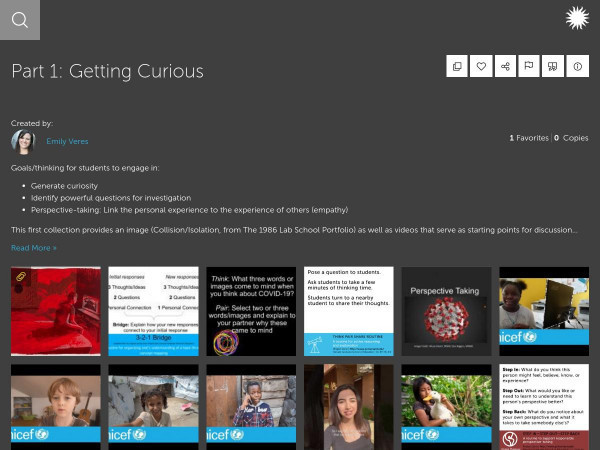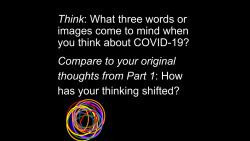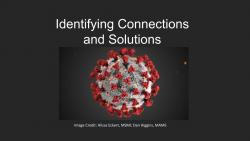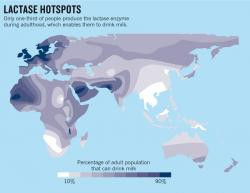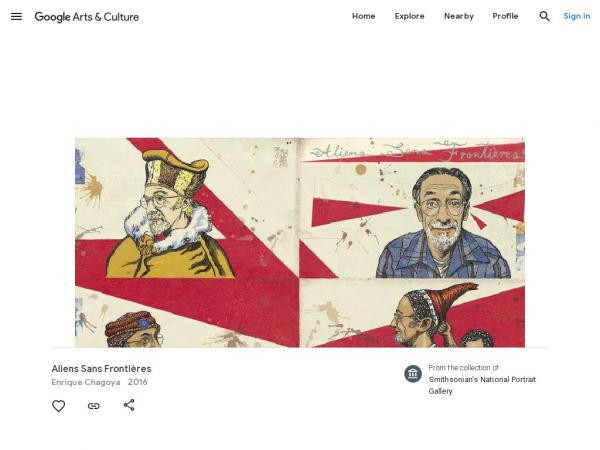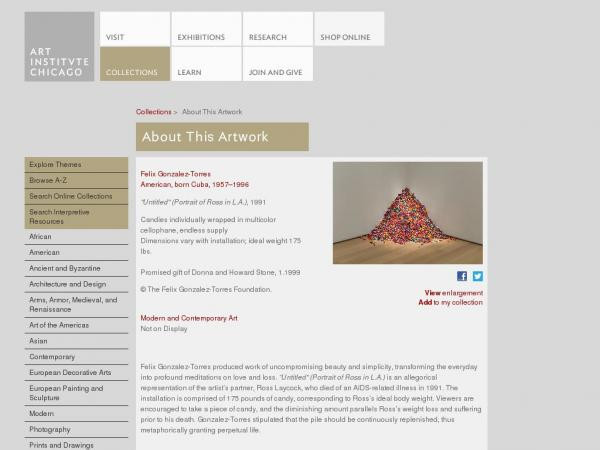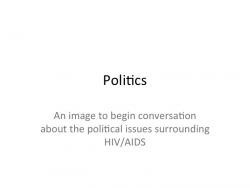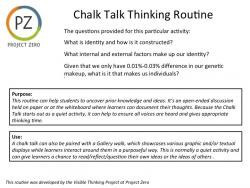Emily Veres's collections
Exploring the Global Implications of SARS-CoV-2 (COVID-19)
<p>What are the global implications of infectious disease, specifically COVID-19? Although a time of great uncertainty and stress, this pandemic provides a chance for us to develop empathy. It has heightened the need for solidarity and to feel connected. By listening to others to learn, not just to understand, we can take the opportunity to feel what someone else is going through. New routines are being set and as we begin to consider what the new normal will look like, we must consider the importance of the transformational impact of empathy. Our challenge is to stay close at a distance in order to better understand motivations and influence dispositions that are shaping behavior and decisions during this pivotal time.</p>
<p>The series of four collections included here provide opportunity and guidance for students to explore the many perspectives of the Covid-19 pandemic. Collections in this series allow for exploration into human interconnectedness and empathy as well as an opportunity for students to map their thinking and make connections.</p>
<p></p>
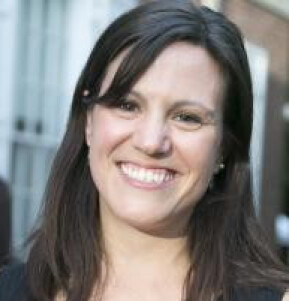 Emily Veres
Emily Veres
4
Part 4: Reflecting
<p>Goals/thinking we want the students to engage in:</p>
<ul><li>Reflect on the learning as well as their personal connection(s)</li><li>Construct a dialogue to consider how different perspectives may interact</li><li>Use the thinking routine ‘I used to think....but now I think’ as an overall reflection on the global implications of COVID-19</li></ul>
<p></p>
<p>This collection provides an opportunity for students to reflect on their learning and proposed solutions by thinking back to their original thoughts about COVID-19. Students can repeat the earlier prompt of identifying three words and/or images that come to mind and add the reflection to compare these new words/images with the three first identified at the beginning of the exploration. How has your thinking shifted? The Project Zero Thinking Routine ‘I Used to think...But Now I Think’ can also be used to help identify their new understandings, opinions, and beliefs as they develop their reasoning abilities and recognition of cause and effect relationships. </p>
<p>The reflection could be extended by asking students to select two perspectives identified in the mapping activity and create a dialogue between them to help illustrate how the chosen perspectives and possible solutions may be complementary and/or conflicting. These could be in the form of a short story, a phone or text conversation or even social media posts. Students could utilize emojis, gifs, memes or shorthand to consider how each perspective may build from or conflict with another.</p>
<p>In #HopeWhereAreYou, children from around the world share their struggles and stories of hope. This could be used to build upon the dialogue that students create - or use in place of the dialogue to consider the intersections of their personal experience as well as the exploration they have engaged in.</p>
<p dir="ltr">Students could: </p>
<ul><li dir="ltr"><p dir="ltr">create their own story of personal challenges and hope to be shared within (and/or beyond) their community</p></li><li dir="ltr"><p dir="ltr">reflect on the dialogue they have previously created from their choice of two perspectives and identify the challenges and opportunities for hope.</p></li><li dir="ltr"><p dir="ltr">write their own messages of hope to themselves, their peers, family, community and/or the world. </p></li></ul>
<p>Teacher reflection at the end:</p>
<ul><li>What did I learn about myself, my students, my local and global community? </li><li>What is my role as a teacher in my community? </li><li>How has my own thinking shifted from the start of this exploration?</li></ul>
 Emily Veres
Emily Veres
5
Part 3: Turning to Solutions
<p>Goals/thinking we want the students to engage in:</p>
<ul><li>A focus on solutions: Consider in what ways could our ‘new normal’ be more inclusive/equitable? In what ways could it be more beautiful? What is my role? What is the role of members in my family and/or community? How might the arts/maths/science/etc respond with solutions?</li></ul>
<p></p>
<p>At this point in time in the exploration, teachers could further examine the role of their own discipline. What role does (your subject here) play? How might (your subject here) respond with solutions? In this collection, students can explore the role of the arts in bringing us together in times of quarantine as well as helping us make sense of a changing world. Additionally, students can examine the connections drawn on their collaborative map and consider these interconnections. As they look at the map, can they locate an intersection that could pose an interesting solution? By pinpointing a specific connection on the map, students can consider the interdisciplinary nature of solutions. </p>
<p>The saying ‘it takes a village’ is often associated with raising children, but as we consider how to move forwards as a society, it is worthy to consider how we can work together to build a better post-pandemic world. In this collection, students can consider what actions can or should be taken as well as the added value of these actions. What should be included as we consider a post-quarantine world? What should be discarded? There are several thinking routines that can help scaffold this conversation, including ‘Circles of Action’, ‘The 3 Y’s’ or ‘Imagine If’. How can what students have learned impact their own actions? How can students share their learning and impact actions taken by community members?</p>
 Emily Veres
Emily Veres
13
Skin color and Race
<p>What is the connection between skin color and race? Historically, science and genetics have been used to support racist world views, yet we know there is no scientific evidence to determine race. This collection uses the painting “Black & White” by Glenn Ligon and Byron Kim and the Project Zero thinking routine “See, Think, Wonder” that has been adapted, making it “See, Wonder, Connect”. Students should not be told of the background of the painting ahead of time, but this can be revealed once they have completed the thinking routine </p>
<p>Additionally, the collection includes a TedTalk by Angélica Dass called “The Beauty of Human Skin in Every Color”, which students will watch next. “We still live in a world where the color of our skin not only gives a first impression, but a lasting one,” says artist Angélica Dass. She is from Brazil, and her family is “full of colors.” She describes her father’s skin as “deep chocolate.” He was adopted by her grandmother, whose skin is “porcelain,” and her grandfather, whose skin is “somewhere between vanilla and strawberry.” Her mom is “cinnamon.” Her sisters are more “toasted peanut.” (<a href="https://blog.ted.com/angelica-dass-reveals-her-art-at-ted2016/">https://blog.ted.com/angelica-dass-reveals-her-art-at-ted2016/</a>). Students should watch the talk and answer a few questions. While these can be done in small groups or as a class, due to the nature of the questions it may be best to allow students time to reflect individually and perhaps share out using a quiet thinking routine called ‘Chalk Talk’. This routine allows students to move around the room, recording responses on large poster paper or a board without needing to use their name. Students can then rotate through, reading the responses of others. If the teacher wants, comments or questions could be added in a non-verbal discussion through interacting on poster paper.</p>
<p>An optional set of extension discussion questions has been provided, but these are suitable for older students. Also, as an additional resource, a link to Byron Kim’s “Synecdoche” at the National Gallery of Art and the Washington Post article about the piece has been included. Students could engage with this work as an extension or look at both pieces side by side in a comparison before any final class reflection. </p>
<p>Then students will finish by using the Project Zero thinking routine “The Three Y’s” as a reflection. </p>
<p>Connection with genetics:
</p>
<p>From an evolutionary perspective, skin color evolved as a mechanism to protect against UV radiation. UV radiation stimulates skin cells to produce melanin, a pigment that can be found in skin, hair and eyes. People living closer to the equator experience a greater exposure to UV A and UV B radiation and therefore need more protection from the sun – hence, more melanin and darker pigmentation. People living in areas farther away from the equator experience less exposure and need far less melanin to protect, so have lighter skin tones. Skin color is an example of a polygenic trait, a characteristic that is controlled by more than one gene, which allows for continuous variation depending on what collection of genes are inherited from parents. If this collection is used within a genetics unit where students learn about these kinds of genes, then students may already have some previous knowledge about the subject. If more information about the science of skin color is needed, I have included a TedTalk by Nina Jablonski entitled “Skin Color is an Illusion” within the collection. Also, more information about the science of skin color can be found in the Discover Magazine article provided. <br /></p>
<p>Advances in genetics have proven that we are all very closely related and differ in our genes by only a very small percent (0.1% on average). With this in mind, we must consider why daily rhetoric continues to perpetuate racist ideas. This collection can be used in several classroom settings, including: Biology (genetics or human evolution unit), Human Anatomy, History (when studying slavery, apartheid or colonialism in general), or Theory of Knowledge (when exploring the Natural Sciences Area of Knowledge, language as a way of knowing, or making knowledge claims about evidence).
</p>
 Emily Veres
Emily Veres
11
Climate Change and Migration
<p>What will the future reveal about our choices and attitudes toward the natural world? This collection uses the painting 'Mamakadendagwad' by Tom Uttech and two Project Zero routines, ‘Ten Times Two’ and ‘Unveiling Stories,’ to start or continue a dialogue about the impact of humans on the environment.
</p>
<p>“Tom Uttech's visionary paintings emerge from a deep sense of communion with nature. As an accomplished birdwatcher, conservationist, wildlife photographer, and hiker, Uttech (born 1942) has spent his life engaging with the unspoiled wilderness of his native Wisconsin and the neighboring woodlands of northern Minnesota and Quetico Provincial Park in Ontario, Canada. Yet while Uttech's experience of the landscape is grounded in firsthand knowledge and close observation, his paintings do not represent specific scenes. Instead, he uses his understanding of the ecosystem's animals, plant life, light, and atmospheres to conjure fantastic reconstructions of the natural world.”. (<a href="https://americanart.si.edu/artwork/mamakadendagwad-110761">https://americanart.si.edu/artwork/mamakadendagwad-110761</a>) </p>
<p>Climate change is expected to cause larger migrations both within and across borders - displacing individuals from their homes. This movement is the result of many complex factors such as: sea level rise, desertification, extreme weather events, etc. While humans are certainly impacted by climate change, so are other living organisms. </p>
<p>This collection can be used in several classroom settings: Biology (ecology unit or any units that address human impact on the environment or relationships between living organisms), IBDP Environmental Systems and Societies (many connections with content throughout the course), AP Environmental Science (many connections with content throughout the course), Theory of Knowledge (when exploring the Natural Sciences Area of Knowledge or exploring knowledge claims about evidence), or Geography. </p>
<p>This collection could be used at the start, middle or end of a unit as there are valuable connections possible at any point; however, I think this would be a fantastic starting image for a unit. In the absence of any context of what is being learned in class, students may come up with a larger variety of observations and perhaps a more emotional connection with the painting.</p>
<p>Annotations attached to the painting provide information on how to guide student exploration with each of the thinking routines. </p>
<p>Extension: The first additional resource is a map showing the average direction mammals, birds, and amphibians need to move to track hospitable climates as they shift across the landscape. The following three articles are related to the moving map and should be used along with the map. Teachers could start with this moving map before showing the painting depending on their students’ level of interest and knowledge. Another extension could be analyzing data to draw conclusions about how migration changes biodiversity in various ecosystems. The last article from National Geographic explains that “…as the planet warms, species are shifting where, when, and how they thrive. They are moving up slopes and toward the poles. That is already altering what people can eat; sparking new disease risks; upending key industries; and changing how entire cultures use the land and sea”. (<a href="https://news.nationalgeographic.com/2017/04/climate-change-species-migration-disease/">https://news.nationalgeographic.com/2017/04/climate-change-species-migration-disease/</a>) Each of these articles highlight an aspect of the complexity of climate change and its impacts on the environment.
</p>
<p></p>
 Emily Veres
Emily Veres
10
Climate Change and Human Impact on the Environment
<p>What will the future reveal about the choices we are making and our attitudes toward the natural world? How might future generations judge these choices and attitudes? This collection uses the painting ‘Manifest Destiny’ by Alexis Rockman and two Project Zero routines, ‘See/Think/Wonder’ and ‘Unveiling Stories,’ to start or continue a dialogue about the impact of humans on the environment.
</p>
<p>“Alexis Rockman is a contemporary American painter known for his fantastical paintings of dystopian natural environments”. (<a href="http://www.artnet.com/artists/alexis-rockman/">http://www.artnet.com/artists/alexis-rockman/</a>) He depicts the future where creatures struggle to survive toxic conditions and invasive species. In Rockman’s paintings we see an absence of human beings, only the altered landscapes they have left behind. (<a href="https://www.artworksforchange.org/portfolio/alexis-rockman/">https://www.artworksforchange.org/portfolio/alexis-rockman/</a>)
</p>
<p>Climate change is expected to cause larger migrations both within and across borders - displacing individuals from their homes. This movement is the result of many complex factors such as: sea level rise, desertification, extreme weather events, etc. There is a direct impact on availability of resources such as food and clean water as well as a crisis of public health.
</p>
<p>This collection can be used in several classroom settings: Biology (ecology unit or any units that address human impact on the environment), IBDP Environmental Systems and Societies (many connections with content throughout the course), AP Environmental Science (many connections with content throughout the course), Theory of Knowledge (when exploring the Natural Sciences Area of Knowledge or exploring knowledge claims about evidence), or Geography. </p>
<p>This collection could be used at the start, middle or end of a unit as there are valuable connections possible at any point. An interesting interdisciplinary exploration that I have seen in the middle school Science setting is for students to visit local waterways affected by human impacts and take samples back to their lab to test for pH, phosphorus, etc. Then, students read about the importance of water ways in the spread of humans in their humanities or language class before writing poetry about the human impact on the environment in their second language class (half of the students took French while the other half took Spanish).
</p>
<p>Manifest Destiny could be integrated at any point during the interdisciplinary unit. For example, in the beginning to encourage questions or determine previous knowledge, the middle to spark curiosity, or at the end after students have more information about human impacts on the environment. </p>
<p>In addition to or in place of visiting a local waterway, a link to an interactive map can be found in the additional resources section of this collection. Students can research what communities will be impacted by rising water levels. A scale bar allows users to shift the water levels and observe changes to the area. A possible extension could be to consider how vulnerable communities tend to be the most impacted by water level rise. Two articles included within the additional resource collection provide perspectives from the United States and Australia. </p>
<p>Annotations attached to the painting provide information on how to guide student exploration with each of the thinking routines. Annotations attached to each website include possible questions to consider when using each additional resource.
</p>
<p></p>
 Emily Veres
Emily Veres
9
The Global Implications of HIV/AIDS - An Interdisciplinary Exploration
<p>This collection includes several images that could be used as starting points for students to engage in a dialogue about the complexities of HIV/AIDS. I would very much encourage students to be given choice when exploring a topic from an interdisciplinary approach, but often it can be helpful to provide a starting point. Works of art can be used, as there are opportunities for students to engage in conversations in pairs or small/large groups about multifaceted issues such as this. A painting or photograph can provide a low-risk way of beginning a discussion about challenging topics. </p>
<p>Students should feel free to use other areas of knowledge beyond what I have included such as Geography and History or more detailed topics such as stigma or virology. Data from the local Department of Health could also be used in addition to or in place of the Gapminder HIV Chart. To see a sample exploration that could be used in place of a much larger interdisciplinary exploration, please see the collection titled "The Global Implications of HIV/AIDS."</p>
 Emily Veres
Emily Veres
18
Exploring the Science of skin color
<p>What was the role of Science in the construction of race? How can various written works and works of art begin a conversation about race as a social construct? These series of activities allow for a dialogue about this complex issue.</p>
<p>This collection includes a three-part activity that can be modified by choosing to spend more or less time sharing out as a group and whether TED Talks are watched as a class or individually as preparation for class. </p>
<p>Part I begins with a work of art to stimulate thought using the Project Zero Thinking Routine "See-Think-Wonder." Students will then read an article and view an advertisement. Another thinking routine is used here to uncover the complexities of this particular advertisement. In the next parts, students view TED Talks followed by different kinds of media. Several Project Zero Thinking Routines can be used to stimulate and record thinking. </p>
<p>
</p>
<p><strong>Part I: Identifying the focus and beginning a conversation</strong>
</p>
<p>Starting with an artwork by Byron Kim and Glenn Ligon, students use the "See-Think-Wonder" Project Zero Thinking Routine to try and make sense of the image. After a class discussion, students should be guided to read a short article about skin-colored ballet shoes that would be more representative of the skin tones of actual ballet dancers. Teachers could choose to help students digest this article or move directly into the Ivory soap advertisement. Using the "Beauty and Truth" Project Zero Thinking Routine, students can uncover the underlying complexity of this image.
</p>
<p>
</p>
<p><strong>Part II: The evolution of skin color and telling the story of a work of art</strong>
</p>
<p>After viewing the TEDTalk by Nina Jablonski about the illusion of skin color, students can reflect individually by answering the question "Why is it problematic to view race as a biological concept and categorize individuals based on skin color?" Then, using Project Zero’s "The Story Routine," students can create meaning for a work of art. Students can share out in pairs first or simply share out to the whole group depending on class size, etc.
</p>
<p>
</p>
<p><strong>Part III: Photography, an essay on color and race and a work of art from that essay</strong>
</p>
<p> Angelica Dass’s photography challenges how we think about skin color and ethnic identity. The TEDTalk describes her Humanae project and allows for further dialogue about the complexity of skin color. Teachers could choose to help students identify important aspects of the talk or move directly into silent reading of Zora Neale Hurston’s essay "How It Feels to be Colored Me." Students can use the "Step inside-step out-step back" Project Zero Thinking Routine to identify perspectives addressed in this essay. Glenn Ligon created a work of art using this essay and students can use this piece to further the conversation with the same thinking routine or simply as part of the reflection. A final reflection about skin color and the social construct of race can be completed either as a group or individually using the "I Used to think…; But Now I Think…" thinking routine. Teachers should consider providing a more focused prompt that suits the goals/objectives of their lesson.</p>
<p></p>
 Emily Veres
Emily Veres
12
Exploring Identity: How can portraiture conceal or reveal?
<p>What is identity? How is it constructed? These activities investigate how portraits can conceal or reveal aspects of identity. How does the artist choose to portray an individual? How does the sitter choose to be shown?</p>
<p>This collection includes a three-part activity that can be modified by choosing to spend more or less time sharing out as a group. It begins with a discussion about identity, using the Chalk Talk Thinking Routine and a comparison of two portraits to further push students' thinking on how portraiture can both conceal and reveal aspects of identity. In the next parts of the activity, students are able to choose from a variety of portraits for individual reflection and then come together as a group to discuss a larger work to about culture and identity. Several Project Zero Thinking Routines can be used to stimulate and record thinking. </p>
<p><strong><br /></strong></p>
<p><strong>Part I: Chalk Talk and comparing portraits</strong></p>
<p>Students participate in the Chalk Talk Thinking Routine using the questions provided. A quick gallery walk where students circulate and read all responses can allow the class to get a feel for the many (or singular) perspective(s) of identity. Using the See-Think-Wonder Thinking Routine, students compare and contrast two portraits: LL Cool J by Kehinde Wiley and John D. Rockefeller by John Singer Sargent. Students can share with a neighbor and then out to the larger group or simply share out as a large group depending on class size, etc. </p>
<p>
</p>
<p><strong>Part II: Portraiture and Identity</strong>
</p>
<p>Using the Individual Exploration of Portraiture worksheet, students can choose one image from the fifteen provided and spend some time exploring their selected portrait. Students can be given 5-10 minutes to interact with their chosen image. Using one of Roger Shimomura’s portraits, students will use the Unveiling Stories Thinking Routine to better understand the many layers to this work of art. Again, students can share out in pairs first or simply share out to the whole group depending on class size, etc.</p>
<p>
</p>
<p><strong>Part III: Returning to chosen portrait and final reflection</strong>
</p>
<p>Students will once again return to their selected portrait and complete the "second look" section of the Individual Exploration of Portraiture worksheet. A final reflection about identity and portraiture can be completed either as a group or individually using the I Used to think…; But Now I Think… Thinking Routine.
</p>
<p>#NPGteach</p>
 Emily Veres
Emily Veres
23

